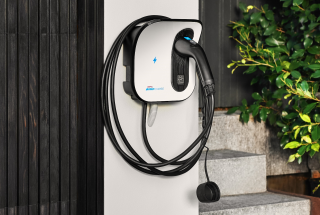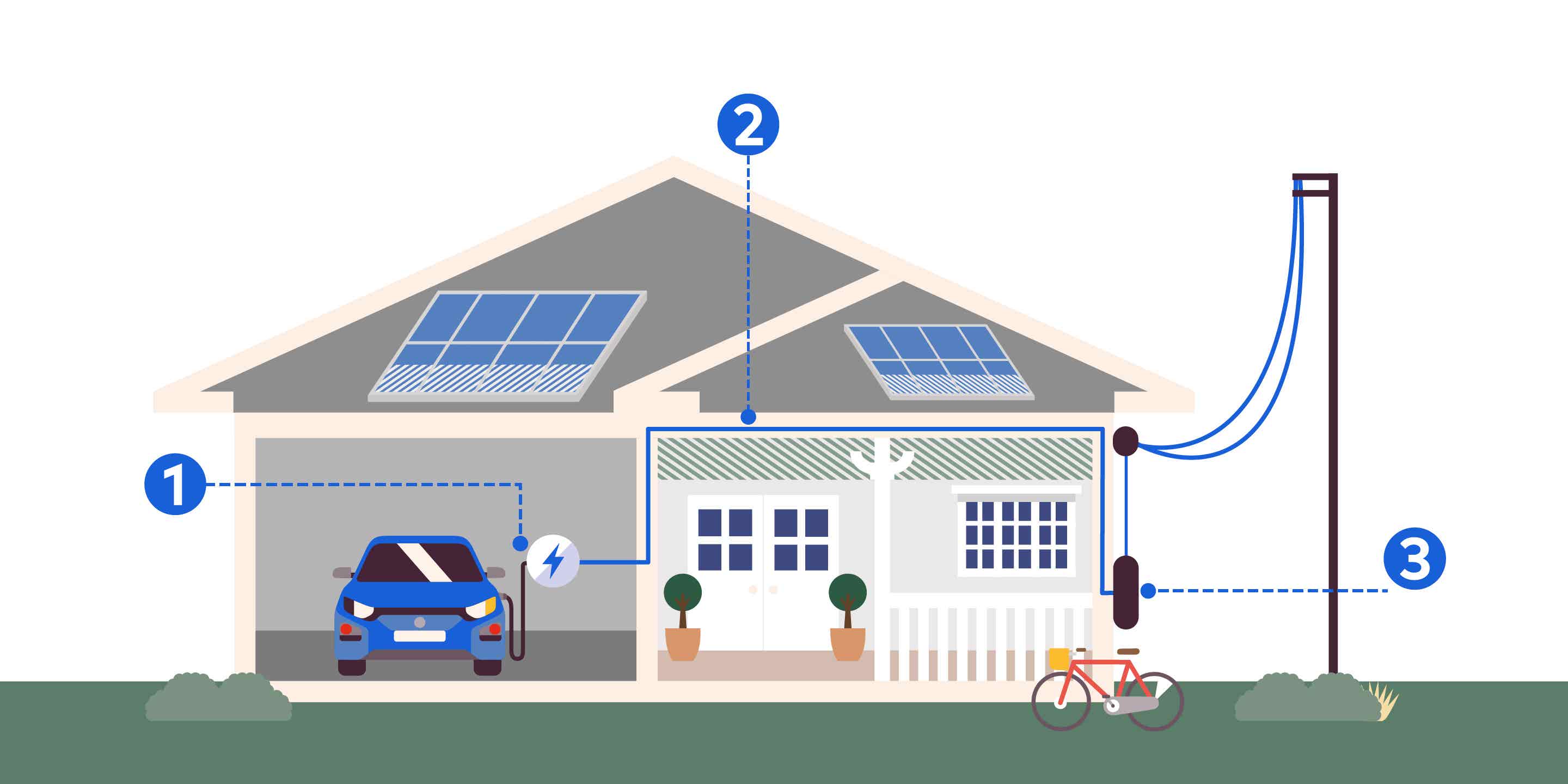
Get 10% off* EV charging across our public AmpCharge network
Purchase any AmpCharge Home EV Charger before 31st December 2025 and enjoy 10% off* EV charging at all public AmpCharge sites for 12 months.
Unique discount code will be emailed to you upon confirmation of your order and must be activated in the Ampol app by 9th January 2026.
Why choose our AmpCharge installer network?
Australia-wide
Our AmpCharge EV chargers can be installed across Australia (1).
Safety is #1
All installations come with a full electrical safety test and compliance certification.
We make it easy
We arrange for a licensed electrician to complete the installation for you, saving you time.
Flexibility
New or older homes, apartments or townhouses – we’ve got you covered (2).
No surprise cost
We’ll provide a detailed cost estimate upfront.
Simply call 13 14 04 (Monday–Friday, 9am-6pm Sydney time).
We've got you covered
Our AmpCharge EV chargers come with a 2-year product warranty (3).
Our installation service
We’ve introduced our Ampol Installation Service to ensure a simple and convenient way to get your EV charger installed quickly. Our home EV chargers are simple to use, but they do need to be installed by a licensed electrician before they are ready to power your next journey.
Our installations include the commissioning and registration of your new EV charger, a full safety test and a demonstration on how to use your new home EV charger by our installer. Installation requirements vary based on different home and parking setups. We will work with you to determine what's required for your home and whether you'll need a 'standard installation' or 'non-standard installation'.
Standard Installation
Standard Installations start from $1,100 (inc. GST) and tend to be installations at owner-occupied homes with off-street parking that require only minor electrical works.
Non-Standard Installation
Non-standard installations are more complex installations. We will provide you with a detailed fee estimate for any additional work if required.
Am I eligible for an Ampol installation?
Before we get started, let’s see if you’re eligible for a home charger installation with the following criteria:
- Your home must be located in Australia and fall within the business area of our service provider.
- Your home must have off-street parking.
- The electricity specifications of your home must meet the requirements of your EV charger.
- Your home must have sufficient spare electrical load capacity to operate an EV charger without exceeding your home’s power limit.
- Your home must meet the requirements for a safe electrical installation in accordance with all relevant Australian standards (determined by Ampol or our service provider at our discretion).
- If you’re renting or live in a multi-dwelling house, you must obtain written approval by your landlord and/or body corporate for the installation of an EV charger and have provided us with the documentary evidence of necessary approvals.
Charger Installation is as easy as 1, 2, 3, 4
IMPORTANT (South Australia residents): If you want to install an EV charger in South Australia, your EV charger must have OCPP connectivity and be registered on the South Australian EVSE registered equipment compliance list, such as our AmpCharge EV Charger Bolt 7kW (registered by EVOS as the equipment manufacturer). Electricians in South Australia are not allowed to install an EV charger in South Australia, unless these requirements are met.
Here are the key components our licensed electricians will install in your home

1. AmpCharge EV charging unit
We’ll install a new AmpCharge EV charger on an interior or exterior wall of your home. The charger will be connected to a single-phase (or three-phase) power electrical circuit and have an isolation switch installed so that power supply can be switched off if needed (without needing to switch off your home’s power).
Importantly, for your EV charger to reach its maximum charging speed, your home must have 32 amps of spare capacity. We can help you check this.
2. Electrical circuit and up to 20m of cabling
We’ll install a new electrical circuit dedicated to your EV charger. This circuit will consist up to 20 metres of copper cabling (depending on the distance between your switchboard and charger location) and be mounted on your wall and/or above your ceiling. We’ll install conduit to protect the cabling where required.
3. Switchboard
We’ll install safety protection for the dedicated electrical circuit that powers your EV charger to help protect against electrical hazards. This includes a 'safety switch' functionality designed to quickly shut off the power in the event of an electrical fault, such as an overcurrent, short circuit or earth leakage (in accordance with AS/NZS 3000:2018 Electrical Installation Wiring Rules).
More Frequently Asked Questions
*Home EV charger offer: You must purchase a publicly available AmpCharge EV Charger from ampcharge.ampol.com.au/charging-at-home between 01/09/25 – 31/12/25. A unique discount code will be emailed to you after payment has been completed. To claim this discount, you must download and register an account in the Ampol app and activate your unique discount code via the Rewards tab in the app by 11:59pm AEDT 9 January 2026. Following successful activation, the 10% discount will be automatically applied to your next charge, and all subsequent charges for 12 months from the date of activation, at any AmpCharge public charging site. After that, the 10% discount will expire automatically. This offer cannot be used in conjunction with any other offer. Discount codes are unique and cannot be shared. Discount codes can only be activated once and are non-transferable. Ampol reserves the right to vary, suspend, or terminate the offer at Ampol’s discretion.
(1) Including regional areas with a 50km travel allowance from our installer network base included within our standard installation. The AmpCharge EV Charger Flash 7kW is not for sale or installation in South Australia.
(2) Includes a full electrical safety test and compliance certification.
(3) Includes carports, garages, detached garages, inside or outside.
(4) In addition to consumer guarantee rights under the Australian Consumer Law.




